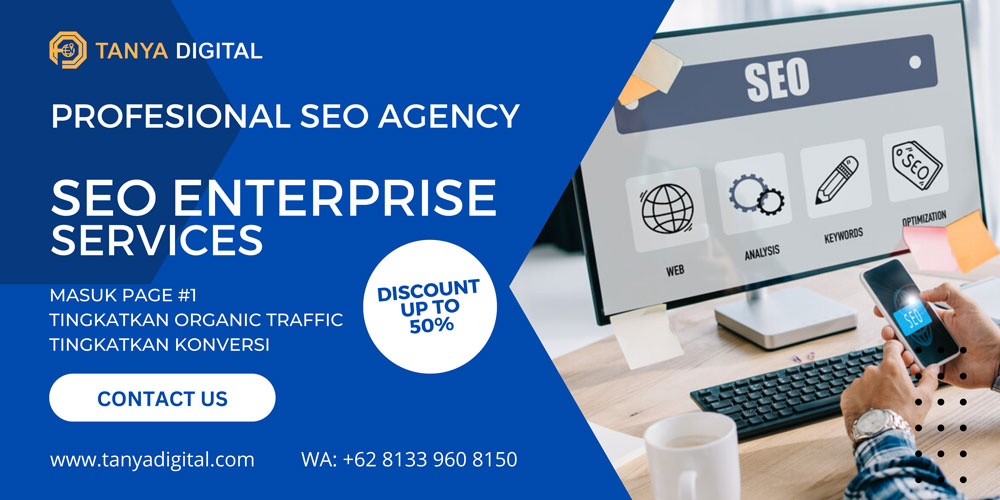[cmsmasters_row][cmsmasters_column data_width=”1/1″][cmsmasters_text]
As a smart digital marketer, you certainly know how vital SEO is that not only optimizing your website pages for search engines, you also need to have tactics and understand the latest search engine optimization (SEO) algorithms.
To increase your website traffic and your brand awareness, it might not be possible if you do not understand how SEO itself both techniques and about understanding your content
In the top 3 search results, we will get more than 50% of traffic or traffic, and Google will get more than 63,000 search requests per second. As we already know, there are many best ways to master SEO, and also there are many technical things that can have a significant role in how your page ranks.
Don’t let unhealthy SEO ranking factors negatively affect the page. Here are 6 that can worsen your SEO Optimization.
1. Make SPAM Comments on a Bad Blog
Comment spam is something that every blog has to deal with. This is a Black hat SEO tactic that uses automatic and semi-automatic bots by posting thousands of spam comments on thousands of sites in one day to create backlinks and increase traffic to other sites.
Spam or other bad blog comments not only pollute your blog posts, they can also seriously hurt your site’s ability to rank even though the links in this comment are not followed.
Spam blog comments damage your site because Google considers where your site links to strong signals about your type of site, and how quality you receive traffic. The typical Black Hat method of attacking a site is by linking it to many spam sites in an attempt to discredit its brand or message.
Combining low-quality links with dangerous keywords that are often associated with spam will cause Google’s algorithm to consider your site suspicious. You can also use an active spam filter. Even if they don’t catch everything, they will catch the most obvious spam comments in inappropriate language.
2. Bad Site Speed
Site speed is one of the most significant signals used by Google to rank pages, especially time for the first byte. This refers to the amount of time it takes a visitor’s browser to get the first byte of information from your server.
Page speed not only affects your ranking but is also crucial for the user experience. Pages with longer load times tend to have higher bounce rates, lower average time on page, and negative impact on conversions.
A slow page speed also means that search engines cannot crawl as many pages as possible using the allocated crawl budget. In turn, your site’s index may not be complete. Most of the time, some effortless changes can significantly reduce your time to the first byte, which you must be under 0.5 seconds.
3. Broken Image Link
When visitors follow links to or from your site, they expect certain content to be available to them as soon as they reach the page. Broken links are not only bad for the user experience but can also damage your search ranking.
The solution is:
Regularly auditing outbound and incoming links can ensure that you don’t direct people (or Google page crawlers) to broken pages. To check internal and external links, try using the Chrome extension. This tool works well for small sites, but more pages can be annoying.
You can also use Ahrefs is a better option for more significant sites as well as paid tools such as screaming frog tools, which can help identify broken images at the same time by finding 404 errors on your site.
Although you don’t have much control over other sites that move around the content, there are many things you can do to prevent creating these broken links on your site. The first thing is updating rather than deleting content.
Publish the page at the same URL when you make update instead of moving it to a new one. This way, you don’t need to delete content that is linked to other pages.
You can also set 301 redirects to a new page if you need to update the URL structure. If the content is still on your site but only changes the location, setting up redirects will ensure that any existing links don’t send users to page 404.
However, do not add this diversion in vain! As mentioned before, too many redirects can turn into site speed issues.
4. Not Having or Forcing SSL
Google prefers sending users to trusted sites. Therefore you should switch to HTTPS, which will help build credit with users and, in the same effect, improve your ranking.
There will be many positive effects of increasing Google’s HTTPS recommendations, and this trend will only continue. An SSL certificate can authenticate websites and servers and encrypt data such as search history and credit card information for visitors to your site.
To encrypt SSL to your site, the first step is to get an exclusive IP address and purchase an SSL certificate.
Once activated, updating your site to force HTTPS will allow you to secure your user information. To get help with getting the HTTPS website, you can contact us at TanyaDigital.
5. Bad / Duplicate Meta Information
The title tag is one of the most important on-page elements for SEO and can optimize your website, which is one of the easiest ways to optimize SEO.
Having a generic title like “Home,” “Home,” or “Brand Name” is a useless ranking opportunity. Get more specific; you must enter your target keywords in your title.
It’s best not to duplicate your title tag or other metadata. Having the same title tag (e.g., if each of our pages says that Bali Digital Marketing Services) can confuse users if they see more than one of your pages on SERP. You can also compete with your page to get better rankings. This also applies to duplicate meta-descriptions and headers.
Inconsistencies and Differences are also essential to avoid, inconsistencies in your meta information.
The way pages are displayed on Google is the first interaction readers have with your content, so making sure this is displayed correctly on SERP is essential.
For example, if you update an article with 2019 in the title until 2020, make sure you do the same in your SEO meta description.
Seeing information that does not match or is dated in these fields can confuse and hurt the credibility of your website. If people don’t consider you credible, they won’t click on your listing.
This is especially true for your blog. Readers are interested in articles by date or year but are also more reluctant to trust articles published a year ago.
Although these differences do not directly affect SEO, they affect the clickthrough rate and time people spend on your page – which can give you an SEO boost.
You can use the Screaming Frog tool here to evaluate and identify duplicate title tags, meta descriptions, etc.
[/cmsmasters_text][/cmsmasters_column][/cmsmasters_row]





